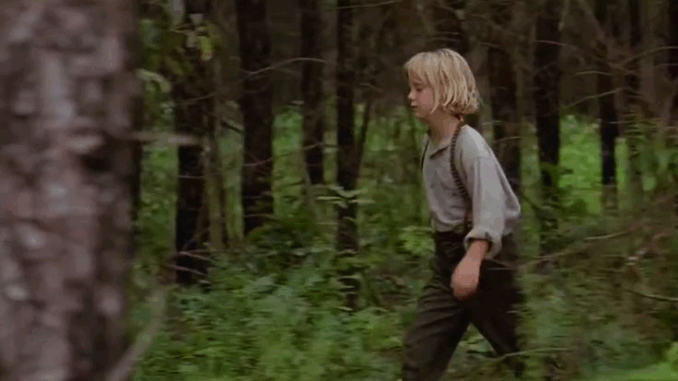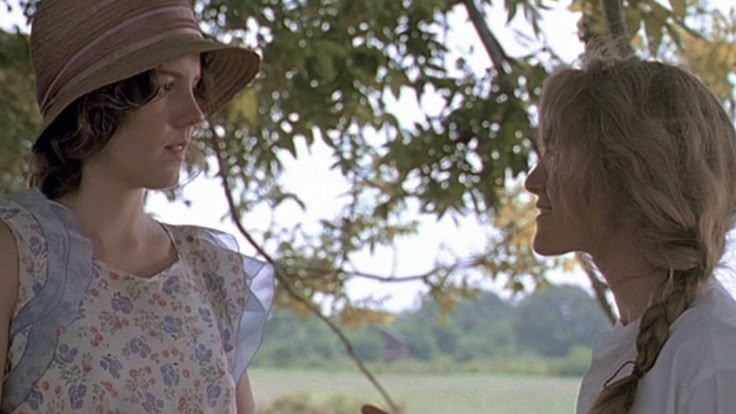
Fried Green Tomatoes may be a film about relationships, memory, and resilience, but its story could not have unfolded the same way anywhere else. Set against the backdrop of the fictional Whistle Stop, Alabama, the film uses the natural landscape of the American South not merely as scenery, but as a crucial force — shaping mood, deepening themes, and echoing the inner lives of its characters.
This isn’t just a Southern town. It’s a living, breathing world that grows alongside the people in it — and sometimes, outlasts them.
Nature as Sanctuary
From the beginning, Fried Green Tomatoes positions nature as a place of refuge and freedom. Young Idgie is drawn to the outdoors not just for play, but for escape. The woods, the river, and even the overgrown paths become safe havens — where she can be her untamed, unfiltered self away from society’s rigid expectations.
-
After Buddy’s death, Idgie retreats into the wilderness.
-
Her bond with Ruth later unfolds on porches, in gardens, on riverbanks.
-
Even the café feels open, breezy, close to the land.
Nature is the opposite of control — and for women trapped by roles, gender, and trauma, it becomes a healing presence.
The Southern Climate: Mood as Weather
The Southern heat, the sun-drenched afternoons, the misty mornings — all of these create a sensory atmosphere that mirrors emotional shifts:
-
Ruth’s decline in health coincides with overcast skies and quieter outdoor scenes.
-
Joyous moments — fishing, storytelling, backyard dancing — occur under golden light.
-
Tensions often rise with storms or sudden wind, mimicking internal turbulence.
This poetic connection between environment and emotion turns Whistle Stop into a barometer of the heart.

Symbolic Flora and Fauna
Throughout the film, small elements of the natural world carry deeper symbolic weight:
-
Bees: Idgie’s beekeeping becomes a metaphor for extracting sweetness from danger. She fearlessly gathers honey, just as she fearlessly protects the ones she loves.
-
Tomatoes: Not just food — but a symbol of sustenance, tradition, and love. Ruth and Idgie’s fried green tomatoes nourish bodies and souls alike.
-
The train: Though a machine, it’s inseparable from the landscape. It represents both progress and tragedy, connecting and dividing.
These natural motifs reinforce Fried Green Tomatoes’s core idea: that life and death, sweetness and sorrow, all exist side by side.
The Land as Memory
Ninny’s stories don’t just preserve people — they preserve place. The Whistle Stop Café, the garden, the back porch — they are spoken of with reverence, as if they are holy ground.
And even after they decay, they remain powerful:
-
The café may be gone, but its presence lingers in the town’s soil.
-
The railroad may be abandoned, but it still carries the weight of past journeys.
-
Ruth’s grave, tended with fresh flowers and honey, anchors memory in the earth.
This is land as memory keeper, holding the emotions that humans cannot carry alone.
Southern Gothic, But Tender
Unlike many Southern Gothic stories filled with decay and menace, Fried Green Tomatoes offers a gentler, more life-affirming vision of the South:
-
Yes, there’s death and darkness.
-
But there’s also joy, community, and an abiding sense that nature endures and forgives.
The trees, the rivers, the fields — they witness it all, without judgment. They are both backdrop and participant in the unfolding human drama.
The South as Soul
By embedding its story so deeply in the landscape, Fried Green Tomatoes transforms Whistle Stop into more than just a setting. It becomes a soul space — where loss is softened by time, where memory is nourished by earth, and where love takes root in the most unexpected places.
In a world that rushes forward, this film reminds us to sit on a porch, sip some tea, and listen to the land — because it still has stories to tell.
